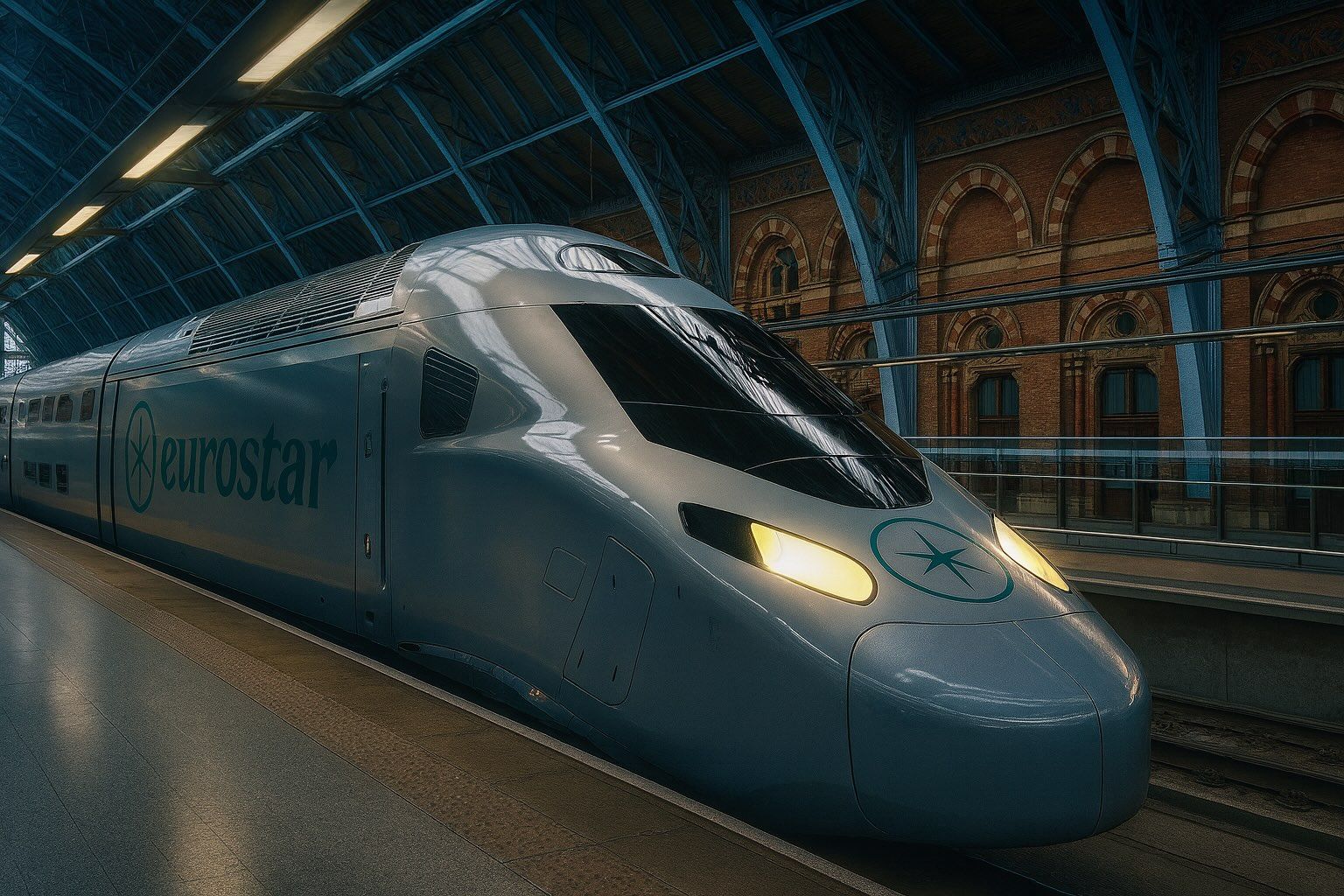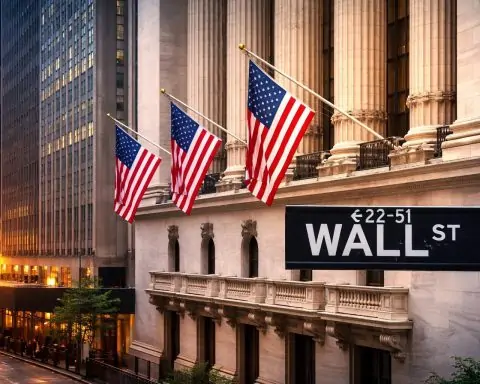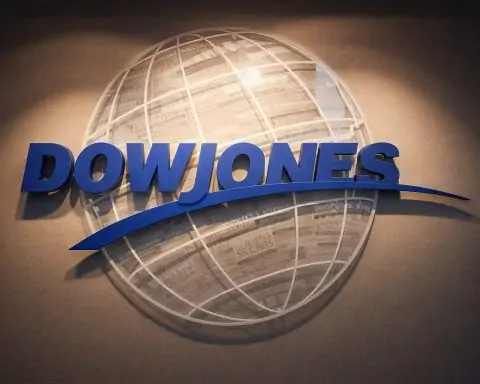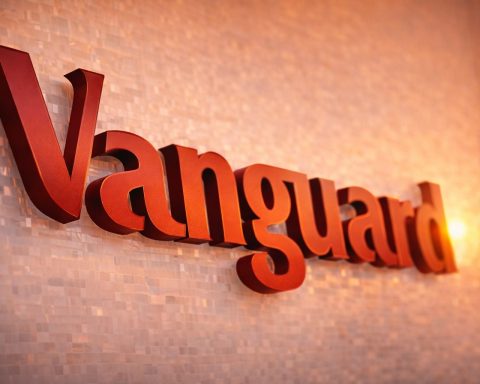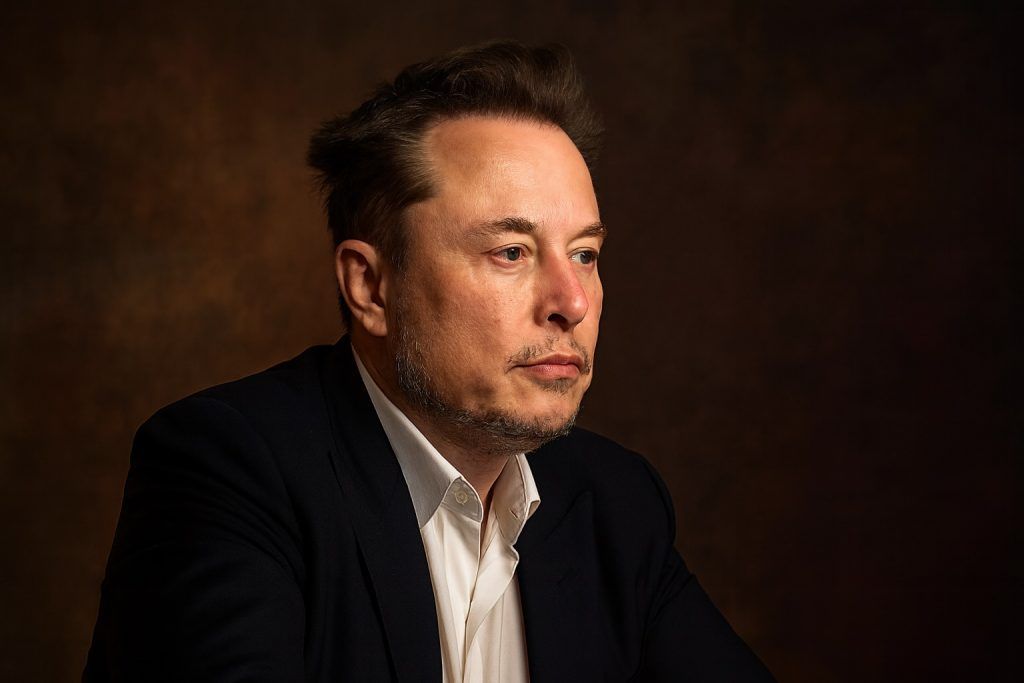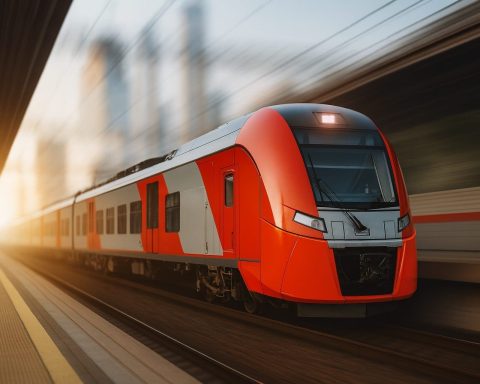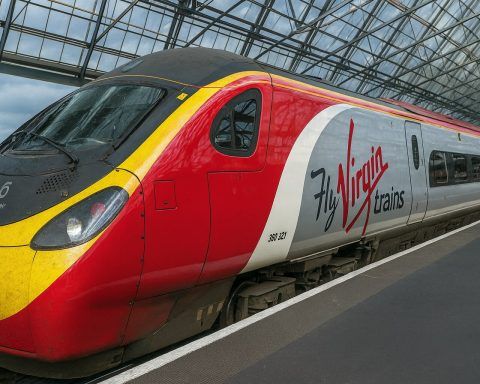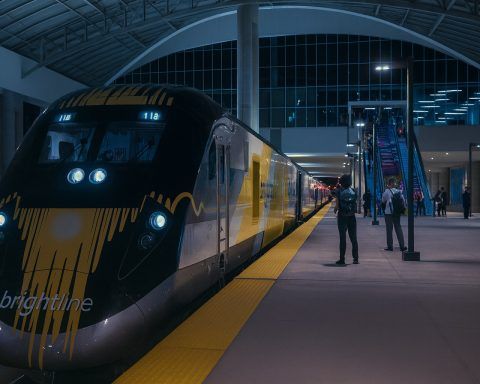- Huge Alstom Deal: On Oct 22, 2025 Eurostar (55.8% owned by SNCF) confirmed a €2 billion order for 50 next‑gen Alstom Avelia Horizon high-speed trains (30 firm + 20 options) [1] [2].
- Pan-European Service: The double-deck TGVs will run under the Eurostar banner across five countries (UK, France, Belgium, Germany, Netherlands), reaching London via the Channel Tunnel. It’s the first use of double-decker high-speed trains on this route [3] [4].
- Fleet Expansion: Deliveries begin in 2031. The new trains (200m long, ~540 seats each) boost capacity ~30%, helping Eurostar pursue its goal of 30 million passengers/year [5] [6]. New direct routes are planned (London–Frankfurt, London–Geneva, etc.) once the fleet is in service [7] [8].
- Stock & Forecasts: Alstom shares ticked up on the news (about +0.7% to ~€21.75 on Oct 22) [9]. Analysts remain bullish: one report projects ~27% annual earnings growth for Alstom over the next few years [10].
- Tech Upgrades: Beyond hardware, SNCF is boosting onboard tech. It plans to integrate LEO satellites with 4G/5G to provide seamless train Wi-Fi (partners include Starlink and Eutelsat) [11].
Eurostar’s Growth Strategy and New Routes
Europe’s rail giants see strong demand. Eurostar CEO Gwendoline Cazenave noted that “customers want to go further by rail than ever” and that the new trains will open “direct trains between London and Germany, and between London and Switzerland for the first time” [12]. Indeed, Eurostar – coming off a record 19.5 million passengers in 2024 – is investing €2 billion to buy up to 50 new TGV units, a 30% capacity hike. These will supplement the existing 17 e320 trains, growing the fleet to 67 units [13] [14]. Eurostar is explicitly targeting routes that were previously impossible: for example direct London↔Frankfurt and London↔Geneva connections. UK Transport Secretary Heidi Alexander hailed the deal as “a huge step in promoting green travel across Europe” [15].
This order is formally an SNCF-Voyageurs board-approved allocation under a larger framework: it represents a third tranche of a contract that already included 115 Avelia Horizon trains. In total, with the 20 optional units, Eurostar could acquire 50 trains (about €2B) [16] [17]. As Reuters explains, “the first time double-deck, high-speed trains will run on the Channel Tunnel route” is now being enabled [18]. Under Eurostar branding the trains will traverse France, Belgium, Germany, the Netherlands and the UK (St. Pancras International in London). Nearly all major Eurostar routes are covered, and the new fleet is interoperable on each country’s network [19] [20].
Cutting-Edge Trains: Tech, Efficiency and Sustainability
The Alstom Avelia Horizon is state-of-the-art. Each 200 m double-decker train has about 540 seats (in single formation) and can be coupled double-high to 1,080 seats. It cruises up to 320 km/h with advanced aerodynamics. Alstom highlights that the Horizon uses 20% less energy per km than previous TGVs, thanks to optimized traction and a sleeker design [21] [22]. Maintenance is 30% cheaper too, with predictive diagnostics built-in [23].
Alstom’s leadership emphasizes French rail expertise: CEO Henri Poupart-Lafarge said that by choosing Horizon “Eurostar affirms its commitment to combining technological performance, energy efficiency and passenger comfort” [24]. Alstom France president Frédéric Wiscart added that involving “10 national sites” on the project showcases French rail industry excellence and sustainable mobility expertise [25]. Indeed, about a dozen Alstom factories (from Belfort to La Rochelle to Saint-Ouen) will work on these trains, with a €150M investment announced to expand production capacity in France [26] [27].
Eurostar’s press release even framed this as a “new golden age of international sustainable travel” [28]. The move dovetails with Europe’s climate goals: adding high-speed rail alternatives to air travel. A French press analysis notes the political angle – direct rail links to Switzerland were recently enabled by a UK–Swiss accord – and Paris is actively promoting low-carbon transport. In short, the trains are as much a symbol of Europe’s green mobility shift as they are new rolling stock.
Market Reaction and Analyst Outlook
The market greeted the news positively. By late October 22, Alstom’s Paris-listed shares had risen roughly 0.6–0.7% intraday to about €21.75 [29]. This modest bump reflected investor interest: Eurostar’s order was one of several major Alstom contracts announced that day. (Earlier in the week, Alstom also won a ~€1.4B SNCF order for 30 Horizon trains [30].)
Analysts remain upbeat on Alstom’s future. For example, Simply Wall St reports that Alstom is “forecast to grow earnings … by 27.2% per annum” and revenue by ~4% [31]. If realized, that would mark significant acceleration for the rail manufacturer. Consensus price targets (before these orders) were already in the mid-20s euros per share; with new high-profile contracts, analysts may well raise targets again. One brokerage note (quoting Dow Jones) highlights that this latest order is just the third phase of a much larger framework and comes on top of 115 trains already in backlog [32] – suggesting many years of production and service revenues ahead for Alstom.
Overall, investors see Eurostar’s deal as confirming Alstom’s market leadership: Alstom now claims roughly 35% of the global high-speed rail market (having acquired Bombardier Transport) [33]. The huge order book (Eurostar’s, plus others) underpins Alstom’s strong balance sheet – at end-June 2025 it had ~€7.8B backlog [34] [35]. After years of pandemic disruption, European train demand is surging, and Alstom is positioned to benefit.
Beyond Trains: Connectivity and Future Tech
Modern rail is more than metal and wheels. Eurostar’s announcement also underscores a push for smarter, better-connected trains. In tandem with new rolling stock, French rail operator SNCF is moving to eliminate “dead zones” on high-speed routes. Industry news (TS2.tech) reports that SNCF is floating tenders to equip trains with combined terrestrial and satellite Internet – basically switching seamlessly between 4G/5G and low-earth-orbit satellites [36]. Companies like SpaceX’s Starlink and Eutelsat’s OneWeb are in talks. This means passengers on tomorrow’s Eurostar HGVs can stream and work without interruption, even through tunnels or remote areas [37] [38].
This focus on technology follows similar trends worldwide – e.g. Kazakhstan and the UK have tested Wi-Fi-on-trains via satellite [39] – and fits with Eurostar’s branding as a premium, 21st-century travel experience. In sum, the Eurostar-Alstom order is about speed and seats and about a digital, sustainable rail future. As Eurostar CEO Cazenave put it, the new fleet combines passenger comfort with environmental efficiency, heralding “a new golden age of international sustainable travel” [40].
Sources: News reports and press releases from Eurostar, Alstom and financial media (Le Monde, Reuters, Boursorama/AOF), supplemented by tech coverage on TS2.tech [41] [42] [43] [44] [45] [46]. (All figures and quotes are up-to-date as of late Oct 2025.)
References
1. www.lemonde.fr, 2. www.tourmag.com, 3. www.reuters.com, 4. www.boursorama.com, 5. mediacentre.eurostar.com, 6. www.tourmag.com, 7. mediacentre.eurostar.com, 8. www.tourmag.com, 9. www.zonebourse.com, 10. simplywall.st, 11. ts2.tech, 12. mediacentre.eurostar.com, 13. mediacentre.eurostar.com, 14. www.tourmag.com, 15. mediacentre.eurostar.com, 16. www.lemonde.fr, 17. www.tourmag.com, 18. www.reuters.com, 19. www.boursorama.com, 20. www.tourmag.com, 21. www.alstom.com, 22. www.alstom.com, 23. www.alstom.com, 24. www.alstom.com, 25. www.alstom.com, 26. www.alstom.com, 27. www.alstom.com, 28. mediacentre.eurostar.com, 29. www.zonebourse.com, 30. www.zonebourse.com, 31. simplywall.st, 32. www.zonebourse.com, 33. www.boursorama.com, 34. www.boursorama.com, 35. www.boursorama.com, 36. ts2.tech, 37. ts2.tech, 38. stratnewsglobal.com, 39. ts2.tech, 40. mediacentre.eurostar.com, 41. www.lemonde.fr, 42. www.tourmag.com, 43. mediacentre.eurostar.com, 44. www.zonebourse.com, 45. simplywall.st, 46. ts2.tech
